O Magnum Mysterium
-
Ships in 1 to 2 weeks
Details
Description
SKU: CF.BL919
Composed by Evan Ramos. Fold. Octavo. With Standard notation. 8 pages. Duration 1 minute, 29 seconds. BriLee Music #BL919. Published by BriLee Music (CF.BL919).UPC: 672405009195. 6.875 x 10.5 inches.
Evan Ramos' arrangement of a well-known Latin text, is haunting, rich, and gorgeous. Whatever the level of your male ensemble, this well-constructed piece is certain to showcase their voices. A lovely addition to any concert or festival program.
O Magnum Mysterium is a setting of a Latin sacred text written for Christmas. The text depicts the extraordinary occurring among the ordinary: God coming to earth as a tiny baby, animals in a lowly stable being the first to witness his arrival. Adding dynamic contrast (crescendo/decrescendo) on every phrase and singing legato (smoothly) with a gentle choral tone will reflect the wonder and awe the original text and this setting attempt to communicate.Original Latin Text: English Translation:O magnum mysterium, O great mystery,Et admirabile sacramentum, And wonderful sacrament,Ut animalia viderunt That animals should seeDominum natum the newborn Lordjacentem in praesepio. Lying in a manger.O magnum mysterium. Amen. O great mystery. Amen.General Latin Pronunciation Guidelines:1. There are only five pure vowel sounds in Latin:A = AH E=EH I = EE O = AW U = OO2. Strive to flip all R’s as if singing in Italian.Latin Pronunciation (accented syllables are UPPER CASE):aw MAH-nyoom mee-STEHR-yoom,*eht ahd-mee-RAH-bee-leh sah-krah-MEHN-toom,oot ah-nee-MAH-lee-ah vee-DEHR-oontDAW-mee-noom NAH-toom,yah-CHEHN-tehm een preh-SEH-pee-aw.aw MAH-nyoom mee-STEHR-yoom. AH-mehn.*The word “mysterium” in this piece is a three-syllable rather than a four-syllable word. This can be accomplished by pronouncing the last syllable “ium” as “yoom” rather than “ee-oom”.At the end of the piece there are a few pitches in parentheses. These pitches are alternative options and can be sung in place of what is originally written. Feel free to mix and match to find a three-part chord that sounds good. My first performance of this piece ended in an open-fifth chord (Baritone singing Bb, Tenor 2 singing F, and Tenor 1 singing Bb).
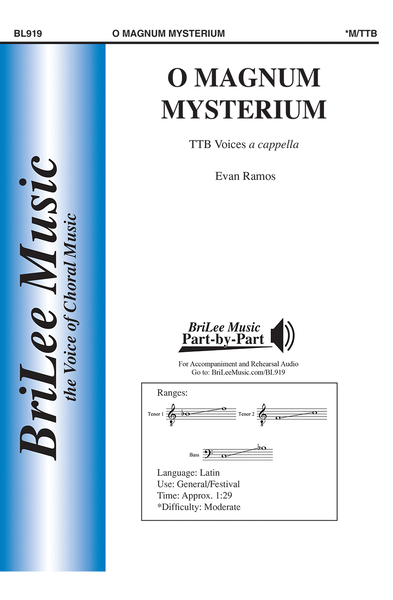
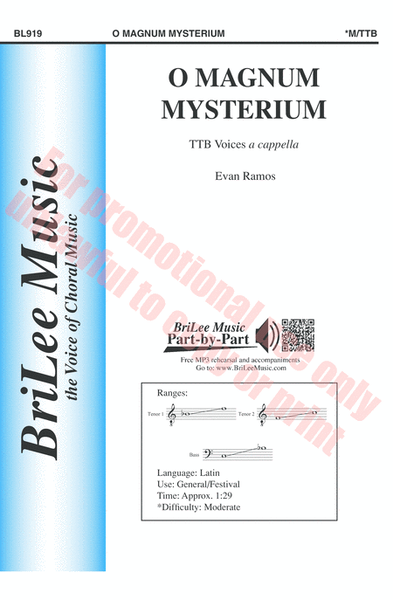
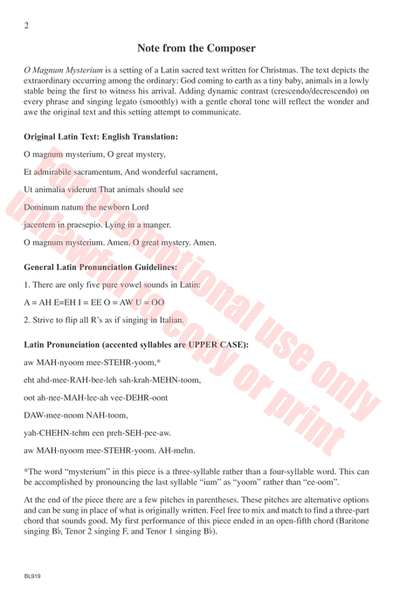
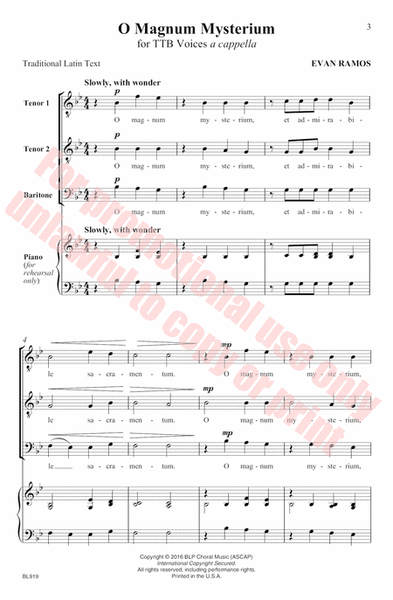
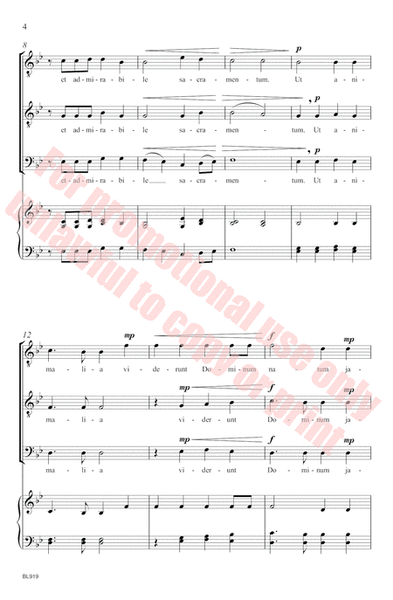



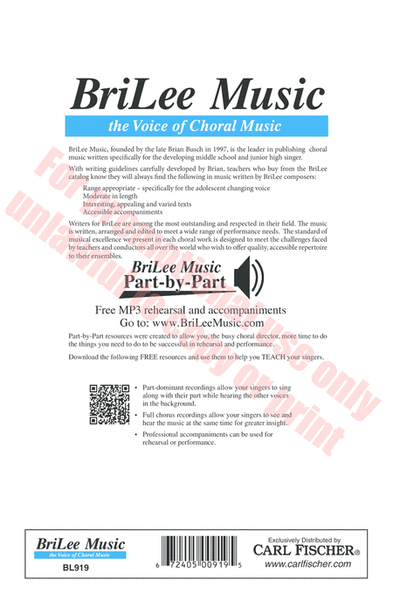
 Share
Share